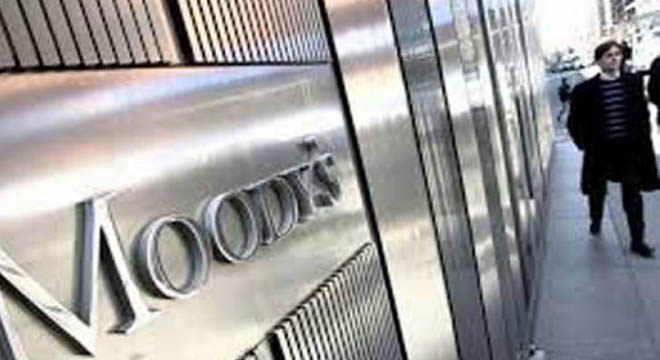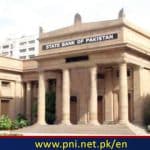ISLAMABAD-Moody’s Investors Services (Moody’s) has noted that economic activity in Pakistan would remain below pre-outbreak levels, although the economy should return to a modest 1.5 per cent growth in fiscal 2021.
Moody’s in its latest report “Pakistan banks face slow economic recovery, but solid funding and liquidity underpin stable outlook”, stated that the coronavirus pandemic is weighing on economic activity in Pakistan and real GDP contracted by 0.4 per cent in fiscal 2020. “We expect the economy to return to growth in fiscal 2021, reaching a modest 1.5 per cent. Although high-frequency indicators suggest that economic activity has started to rebound, restrictions on movements to prevent the spread of the coronavirus will keep economic output below pre-outbreak levels for some time. Growth will, however accelerate to 4.4 per cent in 2022”, it added. “We expect the Pakistani economy to return to modest growth of 1.5 per cent in fiscal 2021 after activity picked up at the start of the fiscal year in July, Moody’s added.
The slow economic recovery will hurt government finances, while successive waves of coronavirus infection weigh on consumer spending and business confidence, all of which will affect the banking sector. We project a government deficit of 8 per cent for 2021, with rising arrears and circular debt in the energy sector also affecting corporates’ repayment capabilities, Moody’s added.
“We perceive risks to the Pakistani economy to be lower than for similar-rated peers. Pakistan’s relatively closed economy has low reliance on exports and private capital inflows and limited trade and supply chain linkages. This reduces its exposure to weak global demand, including international tourism,” it added. The report further stated that wide fiscal deficits, which will – largely – be financed by local banks, might also take precedence over lending to the private sector. Lower consumer spending and business confidence will suppress lending growth and business opportunities. In this environment, Moody’s expects private sector lending to grow by between 5 per cent and 7 per cent in 2021, below inflation expectations of 8 per cent. Interest rates remain at the low end of historical rates, but muted confidence levels will prevent more robust growth.
Moody’s further stated Pakistan remains in the Financial Action Task Force’s (FATF) grey list, as a result of deficiencies in its anti-money laundering (AML) and combating terrorism financing (CTF) capabilities. Failure to meet AML requirements could push international banks to cut correspondent bank relationships, affecting banks’ foreign currency liquidity, business generation capabilities and leading to higher refinancing and compliance costs.
Authorities have, however agreed on an action plan with FATF to negotiate an exit from the grey list, and have now largely addressed 21 of the 27 actionable items. Partly because of AML issues, Habib Bank and United Bank have surrendered their US banking licenses and closed their US branches.
The State Bank of Pakistan (SBP) has targeted 65 million active bank accounts, with total deposits accounting for 55 per cent of GDP, through increased use of mobile bank accounts, biometric verification systems, and QR codes. A targeted 25 per cent market share for Islamic banking by 2023, with an enhanced Shariah governance framework and initiatives to facilitate liquidity management. Islamic banking assets accounted for 16 per cent of banking assets as of September 2020. Increasing SME lending to around 17 per cent of private-sector credit by 2023 by providing an enabling regulatory framework and improving the ease of doing business.
A new Pakistan Credit Guarantee Company and Secured Transactions Registry will support banks in achieving this target increasing housing finance to 5 per cent of private-sector credit by December 2021, with a government mark-up subsidy facilitating banks to achieve this target, initiatives to increase agricultural finance, targeting disbursements of R1.8 trillion by 2023 and 6 million borrowers.
Pakistani banks are heavily exposed to the B3-rated Pakistan sovereign through large holdings of government securities and lending. This links their creditworthiness with that of the government. Pakistani banks hold government securities worth Rs10.3 trillion, a sum equivalent to 7.2x their Tier 1 capital at the end of September 2020. Including lending to the government and public-sector entities, the exposure rises to around 9.0x of Tier 1 capital. “We expect government exposure to remain high over our outlook horizon because Pakistani banks will remain the main source of financing for the government. The government’s commitment to stop borrowing from the central bank will also lead to increased government reliance on banks to meet its financing needs”, it added.
Nonperforming loans (NPLs) in the Pakistan banking sector rose to 9.9 per cent of total loans as of September 2020 (8 per cent as of December 2018), and we expect a further increase as the economic slowdown takes its toll on borrowers’ repayment capabilities, Moody’s added. Loan repayment holidays and other support measures will contain the deterioration but will not eliminate risks. Several sectors will bear the brunt, including energy (affected by high circular debt), agribusiness and sugar, exposures to the SME sector and export-oriented businesses, as well as banks’ foreign operations (particularly in the Gulf). Loan quality risks will be mitigated by improvements in the legal and regulatory framework to support NPL recovery.








